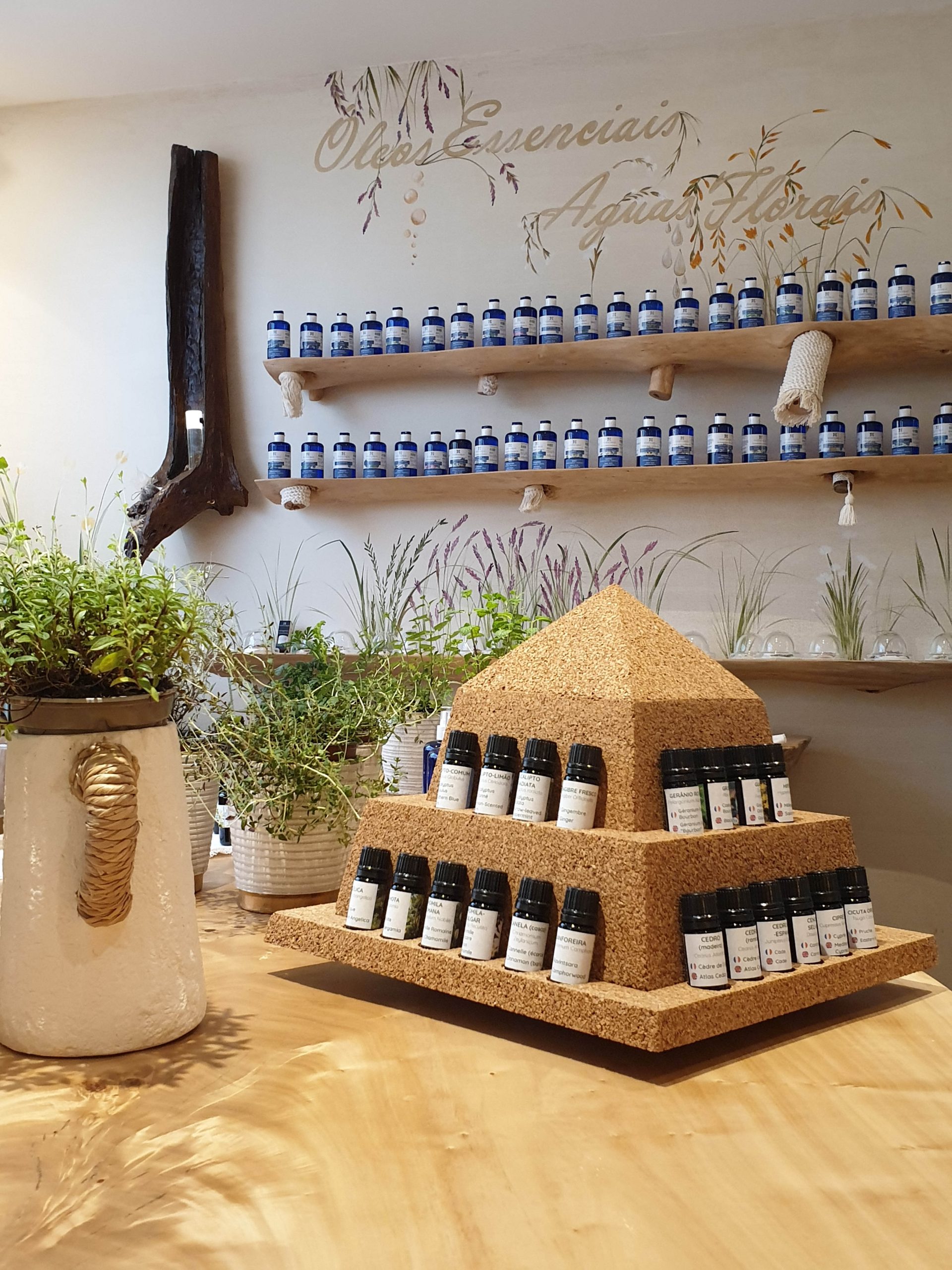
Aromatherapy is a holistic therapy, which uses the properties and active principles of plants that give rise to essential oils, hydrosols, or floral waters, to promote the prevention and healing of imbalances in the body, soul and spirit of a living being.
The energy and information contained in the plant resonate with the vibratory and cellular fields of the Human Being, stimulating rebalancing in all dimensions: physical, psychic and spiritual. There is a better balance of emotions and feelings, more tranquility, reduced stress and anxiety, greater mental clarity, and a more balanced and higher vibratory pattern.
The application of essential oil is an ancient ritual and a practice that we have inherited from ancient civilizations such as Egypt, India, China, Greece, or the indigenous tribes of Africa and the American continent. However, chemists like René Gattefossé or Marguerite Maury laid, in the first decades of the last century, the bases of modern aromatherapy, now accessible to all.
Essential oils and hydrosols are nowadays increasingly used in basic health care – by massages, baths, compresses, diffusion in the environment or ingestion (only floral waters and hydrosols can be ingested directly) – and also in gastronomy, thanks to the nutritional and medicinal properties, as well as the aromas and flavors they offer.

What is an essential oil?
It is a hydrophobic liquid that contains volatile chemicals obtained from plants. It is a product resulting from the hot extraction of leaves, petals, roots, stems, seeds, or bark of a plant being.
The choice of an essential oil should preferably be an organic and 100% pure oil. It is a seal of guarantee that all the active ingredients and properties of the plant are not altered or diluted with chemical or synthetic additives. That is why 100% pure oils are sold in the market at a higher price, but two drops will also be enough to get all the essence of the plant, which does not happen with diluted oils because sometimes 10 drops are necessary.
An organic oil is any oil that is made from fresh plants from organic farming, duly certified, and whose distillation process is done by hand or little industrialized. The French brand Essenciagua is one example.
The manufacture of an essential oil is generally done slowly, at low vapor pressure, and at a reduced temperature. This is one of the secrets to not damaging the most fragile components of the plant and thus guaranteeing all the complex richness that this living being of the Plant Kingdom offers us.
The nature of an essential oil varies from plant to plant, within the botanical family, and from species to species. In this sense, the composition of a pure essential oil can vary according to the method of distillation, the year of cultivation of the plant, the climate, the geographical location, among other elements, which makes it unique and thus allows it to benefit from specific benefits.
When consuming essential oils, if they are 100% pure, one or two drops will be enough to obtain the properties and active ingredients of the chosen plant.
One drop of pure essential oil contains a high concentration of bioactive components, which, according to specialists, to achieve equivalent therapeutic potential, should be ingested about 20 cups of the infusion of the plant that gives rise to the oil. This proportion is due to the fact that to produce a liter of essential oil, it sometimes takes a ton or more of the plant.

Hydrosols contain the properties of the diluted plant
In the process of distilling an essential oil, hydrosol (by distillation of the leaves, petals, roots, stems, seeds, or bark of plants) or floral water (when the distillation is only from the flowers). These essential oil by-products may contain the same properties and active ingredients as the plant or additional properties and active ingredients, except that they are in a diluted state. Confusing?
Following the condensation of the plant material, in the process of distilling the plant, there is a change from the gaseous state to the liquid state, the result of which is water mixed with the essential oil, this last remaining on the surface. Once the essential oil particles are eliminated, the remaining water has the dissolved properties of the plant, that is to say, what is called Hydrosol or Floral Water, if the distillation has been done only from flowers.

How to apply oils and hydrosols
The high concentration of properties in pure essential oil means that therapists do not recommend a period of daily use longer than seven consecutive days. After seven days of use, stop for three days, before resuming, if necessary. The downtime prevents a possible toxic wave in the body.
In massage, it is advisable to mix pure essential oils with vegetable oils, such as Sweet Almond, Sesame, Jojoba, or Nigella, at the rate of three drops of essential oil for seven drops of vegetable oil. This dilution allows a faster absorption through the cutaneous layers of the properties offered by the plant and avoids possible imperfections and skin irritations.
In case of ingestion of essential oils, it is recommended to mix the oil with jam or honey in a small toast, because of the high potential of the plant that it offers to the body. However, not all essential oils can be ingested.
Essential oils can also be used in baths, compresses or diffusers and misters for the environment, as well as in gastronomy.
In the case of hydrosols and floral waters, they can be ingested directly by anyone, spread on the skin in the form of a lotion or cream, used in baths, through aromatic diffusers or misters, but also in gastronomic preparations.




